This tutorial allows you to complete a reliability analysis of a single degree-of-freedom system excited with initial kinetic energy.
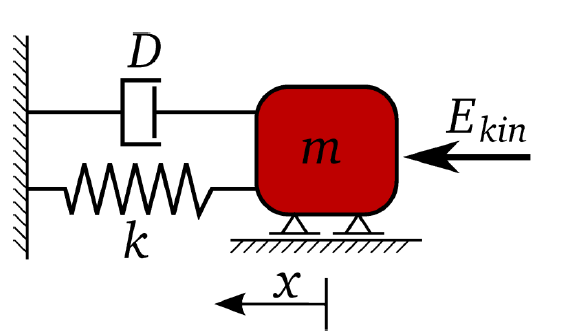
This tutorial uses the robust optimum found in the iterative robust design optimization procedure in the previous tutorial.
The reliability criterion for omega_damped will be evaluated.
Mass m, damping ratio D, stiffness k and initial kinetic energy Ekin are taken as normally distributed random variables.
This tutorial demonstrates how to do the following:
Incorporate the results of the robust design optimization
Define the limit state for damped eigen frequency
Compute the probability of failure (the probability of exceeding the limit) by Adaptive Response Surface Method and Importance Sampling

You must complete the Robustness Evaluation of a Damped Oscillator tutorial before starting this one.
The best design of the iterative robust design optimization is used as the reference for the reliability analysis.
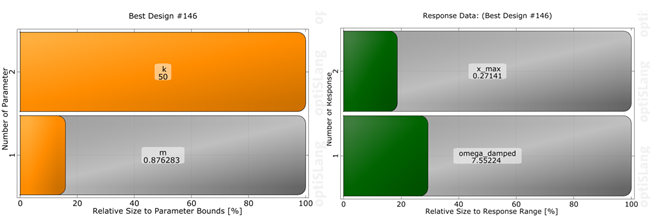
To set up and run the tutorial, perform the following steps:
- Opening the Damped Oscillator Optimization Project
- Completing the Adaptive Response Surface Method Robustness Wizard
- Running the Project and Viewing the ARSM-DS Reliability Evaluation Results
- Completing the Importance Sampling Robustness Wizard
- Running the Project and Viewing the ISPUD Reliability Evaluation Results
Start optiSLang.
From the Start screen, click .
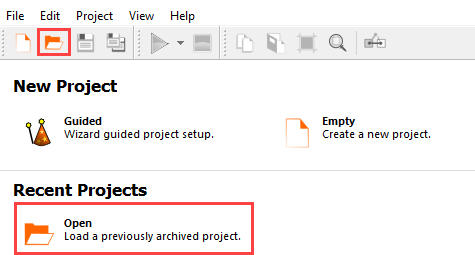
Browse to the location of the damped oscillator optimization project you used in the previous tutorial and click .
Drag the Robustness wizard onto the AMOP_Step2 system and let it drop.

At the bottom of the Parametrize Inputs table, click
From the Select system pane, select Robustness_Step2.
To highlight all of the parameters in the table, do one of the following:
Click the name of the first parameter, press Shift, and then click the name of the parameter the last row.
Click the name of the first parameter, then with the mouse key pressed, pull down to the last parameter and release the mouse key.
Click .
The selected parameters are imported.

Click .
To delete the existing criteria, select all the values in the Criteria list then right-click the selection and select from the context menu.
At the prompt, click Yes.
Drag omega_damped to the Limit State Less icon.

Change the omega_damped Limit field to
8.5.
Click .
From the Uncertainty knowledge list, select .
The Adaptive Response Surface Method (ARSM-DS) is automatically selected.
Move the Desired sigma level slider to
4.5σ
Click .
Do not adjust the additional options settings.
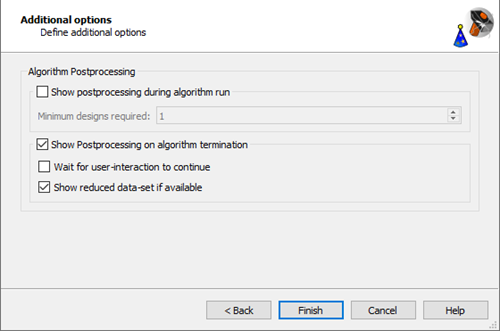
Click .
The ARSM-DS system is added to the Scenery pane.
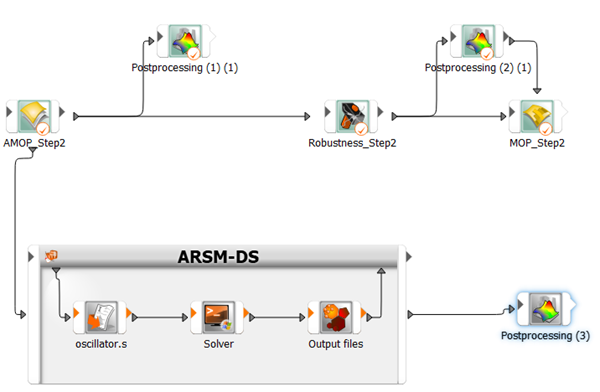
To save the project, click
 .
.To run the project, click
 .
.The results of the ARSM-DS reliability evaluation are displayed. You can observe:
Failure probability is about 10-6
Corresponding reliability index is about 4.7 which fulfills the robustness requirements
In the m-k-anthill plot, a clearly separated unsafe domain can be observed

Drag the Robustness wizard onto the ARSM-DS system and let it drop.
Do not adjust or add to the currently displayed values for parameters, responses, and criteria.

Click .
From the Uncertainty knowledge list, select .
Move the Desired sigma level slider to
4.5σSelect .

Click .
Do not adjust the additional options settings.

Click .
The ISPUD system is added to the Scenery pane.
To save the project, click
 .
.To run the project, click
 .
.The results of the ISPUD reliability evaluation are displayed. You can observe:
The design point search converges within five iterations
Failure probability is about 10-6
Corresponding reliability index is about 4.7 which fulfills the robustness requirements
The ARSM-DS results are verified

Open the Reliability Importance plot.
You can observe:
Parameter k and m are most important with respect to the failure probability
Ekin and D have neglectable influence



